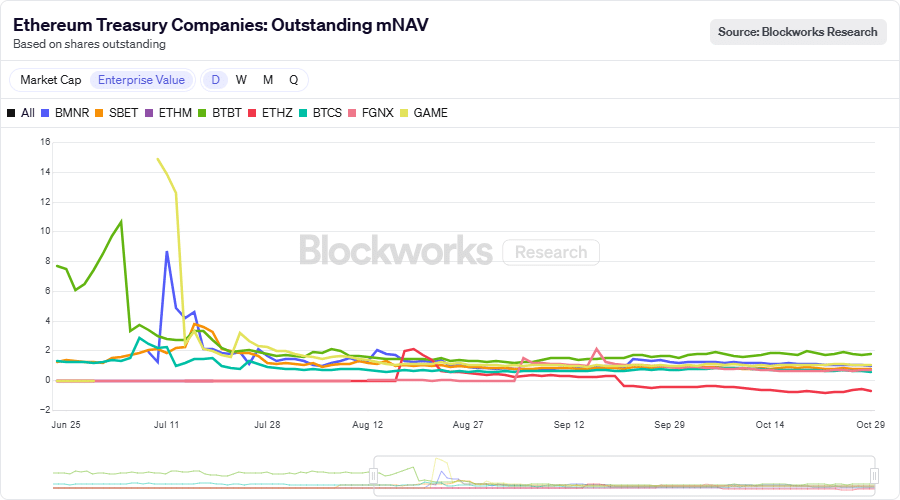Hong Kong’s securities regulator has blocked five firms from adopting digital asset treasuries (DATs) due to concerns over valuation risks and retail investor awareness. The SFC emphasizes education to mitigate premiums on share prices above crypto holdings, drawing from U.S. examples of market instability.
-
Hong Kong’s SFC is monitoring DATs closely after halting pivots by five companies.
-
The regulator highlights risks where share prices trade at premiums over crypto asset values.
-
Global divergences exist, with U.S. and Japan embracing DATs while Australia imposes strict limits, amid falling mNAV ratios signaling discounts.
Explore Hong Kong’s cautious approach to DATs regulation amid global crypto treasury trends. Learn risks, regulatory stances, and future implications for investors seeking stable digital asset strategies today.
What is Hong Kong’s stance on digital asset treasuries (DATs)?
Hong Kong’s Securities and Futures Commission (SFC) is adopting a cautious approach to digital asset treasuries (DATs), recently blocking five firms from shifting their strategies to include significant crypto holdings. This decision stems from worries about underlying risks that retail investors might not fully comprehend, such as volatile valuations tied to assets like Bitcoin and Ethereum. Chairman Kevin Wong Tin-yau has stressed the need for greater investor education to address these concerns.
How do valuation risks impact DAT adoption in Hong Kong?
Valuation risks in DATs arise when company share prices trade at substantial premiums above the net asset value of their crypto holdings, potentially leading to sharp corrections. According to SFC insights, this mirrors U.S. cases where unchecked premiums exposed investors to significant losses during market downturns. In Hong Kong, the regulator is prioritizing awareness campaigns, noting that as of late 2025, many DATs face mNAV ratios below 1, indicating discounts that could force asset sales to maintain stability. Experts from financial analysis firms like Blockworks have observed that such discounts threaten leverage, with companies like Metaplanet resorting to share buybacks funded by crypto collateral to bolster values. This structured oversight aims to protect retail participants while allowing institutional players to navigate the space more carefully.

Source: Blockworks
Frequently Asked Questions
What risks are associated with Hong Kong firms pivoting to DATs?
Hong Kong firms face regulatory blocks on DAT pivots due to risks like inflated share premiums over crypto values, which can lead to valuation instability. The SFC cites potential investor losses from volatility in assets such as Bitcoin, Ethereum, and Solana, urging enhanced disclosure and education to safeguard retail traders.
Why might mNAV discounts affect the future of DATs globally?
mNAV discounts occur when market values fall below net asset values of crypto holdings, signaling over-leverage and prompting potential sell-offs. This could slow DAT growth worldwide, as seen in regions like Hong Kong and Australia, where regulators prioritize stability; however, proactive measures like buybacks in Japan offer pathways to recovery.
Key Takeaways
- Hong Kong’s regulatory caution on DATs: The SFC’s blocks on five firms underscore concerns over retail investor risks and share price premiums, promoting education to foster safer adoption.
- Global regulatory divergences: While the U.S. and Japan lead with successful DAT models like Strategy and Metaplanet, Australia and Hong Kong impose limits to curb volatility and balance sheet exposures.
- Impact of falling mNAV ratios: Discounts below 1x threaten stability, potentially forcing crypto sales, but strategies like collateralized buybacks provide tools for companies to navigate these challenges.
Conclusion
Hong Kong’s stringent oversight of digital asset treasuries (DATs) reflects a broader commitment to investor protection amid valuation risks and mNAV discounts, contrasting with more permissive approaches in the U.S. and Japan. As regulators worldwide refine rules on crypto holdings in corporate strategies, enhanced education and disclosures will be key to balancing innovation with stability. Investors should stay informed on these developments to make prudent decisions in the evolving DAT landscape.
Divergent Regulatory Stance on DATs
Digital asset treasuries (DATs) represent a corporate strategy where firms allocate portions of their balance sheets to cryptocurrencies, including Bitcoin (BTC), Ethereum (ETH), Solana (SOL), and others. This model, popularized by companies like Strategy (formerly MicroStrategy), allows businesses to capitalize on crypto’s growth potential. However, it introduces inherent volatility, as share prices closely track the fluctuating values of underlying digital assets.
Regulatory responses vary significantly across jurisdictions. In Hong Kong, the Hong Kong Exchange (HKEX) has actively prevented five companies from adopting DAT strategies, citing undisclosed risks that could mislead retail investors. A report from local media highlighted the SFC’s focus on ensuring share prices do not detach excessively from the actual value of crypto reserves. Similarly, in Australia, authorities have restricted firms from committing more than 50% of their assets to DATs, rendering large-scale pivots impractical and emphasizing the need for diversified risk management.
Conversely, the United States hosts prominent DAT adopters, with Strategy reporting billions in unrealized profits from its extensive Bitcoin holdings. Japan’s Metaplanet has followed suit, leveraging crypto to enhance shareholder value. Even so, oversight is tightening; Nasdaq now requires detailed disclosures and shareholder approvals for DAT listings to address potential leverage issues. These differences illustrate a global tension between embracing crypto innovation and mitigating its risks, with Hong Kong’s approach prioritizing caution to build long-term market confidence.
Falling mNAV Ratios and DAT Stability
The market-to-net asset value (mNAV) ratio serves as a critical metric for DATs, comparing a company’s share price to the value of its crypto portfolio. Recently, many DATs have seen mNAV ratios drop into discount territory—below 1x—indicating that shares are trading at less than the worth of held digital assets. This trend, observed across various firms, raises alarms about over-leverage and could compel companies to liquidate crypto to deleverage if the discount persists.
For instance, prolonged mNAV discounts might erode investor trust and force strategic adjustments. In response, entities like Metaplanet and ETHZilla have initiated share buyback programs, often financed by using crypto as collateral for credit lines or selective sales. These maneuvers aim to realign market perceptions with asset values, but they also highlight the precarious balance DAT operators must maintain amid crypto’s price swings.
Analyses from sources such as Blockworks underscore that while DATs offer exposure to crypto’s upside, the volatility can amplify corporate risks. Regulators in Hong Kong are particularly vigilant, warning that without proper safeguards, these discounts could precipitate broader market disruptions. As the sector matures, clearer guidelines on mNAV monitoring and risk disclosures will likely emerge to support sustainable DAT growth.
The SFC’s proactive stance, led by Chairman Kevin Wong Tin-yau, includes ramping up educational initiatives. Wong noted, “The SFC is concerned about whether DAT companies’ share prices are traded at a substantial premium above the cost of their DAT holdings,” referencing U.S. precedents where premiums spiraled, leading to investor vulnerabilities. This emphasis on transparency aims to equip retail participants with the knowledge to assess DAT-related investments accurately.
Looking ahead, the DAT segment’s trajectory hinges on navigating these leverage challenges. While discounts pose immediate threats, adaptive strategies from leading players suggest resilience. Hong Kong’s measured approach may influence other Asian markets, promoting a framework where crypto treasuries contribute to economic innovation without undue peril.






